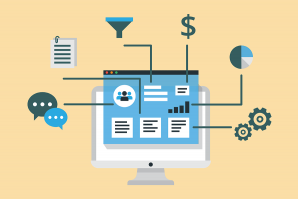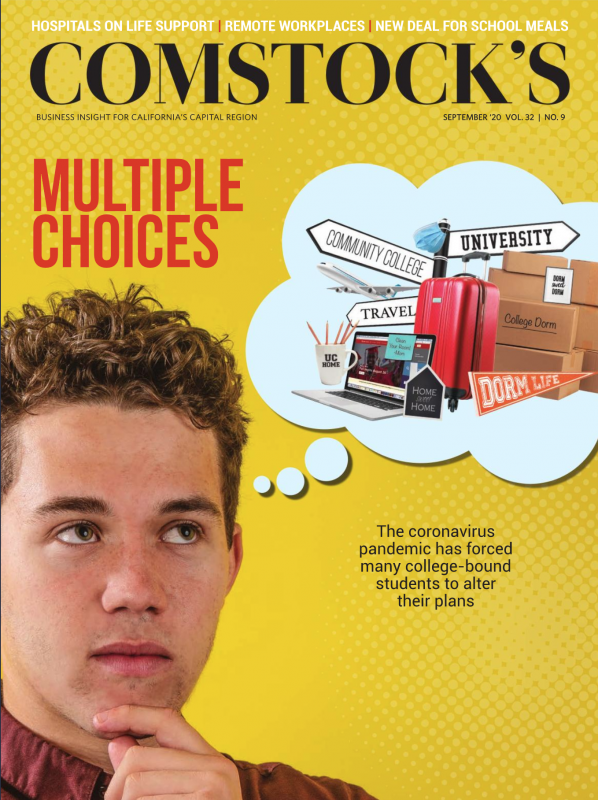I am an intellectual property snob. I’ve spent much of my life making original things and am passionate about the idea that they have tangible value. Since 1990, my business has made original graphics, stories, ads and websites for clients. And as marketing became increasingly reliant on digital media for creation and distribution, it’s been challenging to keep pace and avoid infringing — even accidentally — on anyone else’s rights.
Defining originality is tricky. Creators in every medium are influenced by techniques and trends, both current and historical. But in the digital sphere, it has become easier to go beyond influence to outright theft. The most egregious examples involve major corporations helping themselves to the original work of independent makers. They know it’s wrong, but they flex their legal and brand clout to avoid consequences. I’m focusing on a less obvious, possibly inadvertent, form of infringement — something I see too often from small-business peers. I’m talking about the casual “borrowing” of creative content for use in promotion and education. Here are examples I’ve seen recently:
- A copyrighted article that’s scanned and distributed without permission to clients.
- A licensed graphic that’s lifted from the web to dress up a social media post or event promotion.
- A trademarked brand slogan that’s used to promote a seminar.
- A handful of images that are copied and sprinkled through a presentation deck or blog.
Maybe the economic climate is prompting professionals to cut corners, but I think it’s more a case of simple ignorance. A possible rationalization is that art theft is a benign act with no victims or risk, maybe that it’s promotional for the assets’ owners. But there are arguments to the contrary about stealing others’ work.
It Stunts the Creative Economy
In my snob argument, our society is better with a robust market for music, books, movies and visual arts. When the value of these is diminished via theft, opportunities for artists are eroded. It’s tempting to think, “Hey, Disney can afford to share.” But further down the food chain, Disney and other megabrands in the creative universe give work to writers, artists and musicians. Stealing creative work hurts them.
It Is Illegal and Exposes You Financially
Take the case of The Content Factory, a digital marketing agency that was sued for “borrowing” a photo of Omaha, Nebraska, to use in a client’s blog. Though the infraction was ultimately settled for $3,000, the company could have saved 95 percent of that sum, plus much anxiety, by paying an appropriate fee upfront to use the image. My business probably gets called once or twice a year to prove that we properly secured rights to an image, audio track or video clip. Any of those could have been a financial catastrophe. Especially now, with the ubiquitous and viral nature of the internet, there’s a chance someone will come after you for lifting their work. You do not want it to be Disney.
It Taints Your Brand
When I sit through a business presentation peppered with obviously pilfered artwork, I cringe for the presenter, partly because the art distracts from the messaging with its cacophony of styles and subjects, but also because it’s stealing. Presuming to educate peers and prospects with someone else’s content undermines the essential brand premise of expertise and integrity. And when it’s done by someone in the education sector, I cringe harder, as the theft sets a poor example for an audience seeking to learn.
There are options for adding creative appeal to your work without stealing.
Create Your Own
This is my favorite avenue. Even a simple collection of self-drawn stick figures or a shaky in-house video clip can add charm and elevate meaning in a presentation or social post.
Check the Public Domain
When copyright expires or is voluntarily surrendered, work enters the public domain and becomes available for all. Exclusive rights are nonexistent, and no permission is needed. You just need to do some research to find what you need, starting here:
- Wikimedia Commons is one of the largest public domain resources for free photographs.
- Unsplash is a collective of photographers offering high-resolution images for free.
- Magdeleine is another high-quality resource for free photography.
- YouTube Audio Library offers free music and sound effects. Search by genre, mood or instrument and download as an MP3 file.
Use Stock
When the asset you need is more specific, it may be worth paying for commercial stock. The most affordable are royalty-free images, which typically means that you pay one fee and can use the work as often as needed under licensing terms. For a small fee, you can safely use professional work to jazz up your newsletter or blog from these sources:
- iStock is a popular resource for images and video.
- Shutterstock is a database of images, clip art, music and video.
- Pixabay has thousands of video clips, images, clip art and music.
- Vecteezy has clip art with cohesive themes.
Ask Permission
Sometimes, especially online, a creator will grant you permission to use their work in exchange for a backlink, a credit or a modest fee. Or a publication might give permission to copy and distribute an article in the context of an educational seminar. It never hurts to ask.
Copyright laws can, I admit, go a little overboard. In 2016, Warner Chappell Music paid $14 million to end a lawsuit challenging its hold on the well-known ditty, “Happy Birthday to You.” With the song now free for public use, restaurant servers no longer have to sing their weird alternative versions to embarrass celebrating diners.
Small businesses should be more aware of casual copyright infringement. The creative economy, the business community and your own brand will all benefit from holding one another accountable to a higher standard in communications.
–
Stay up to date on business in the Capital Region: Subscribe to the Comstock’s newsletter today.
Recommended For You

Systems for Success
How to build your marketing approach without making it formulaic
Whether your business relies on tried-and-true methods like billboards, commercials, sponsorships, local print advertising and mailers, or digital ones like social media channels, email marketing, Facebook promotions and Google ads, your marketing needs a system.

Art Exposed: Benjamin Della Rosa
The designer and illustrator’s career is all about connections
Della Rosa’s signature style can be seen in the visual branding of companies around the Capital Region, including restaurants, food and beverage brands, creative festivals and more.

Knock it Off
How businesses deal with intellectual property in the internet age
Understanding the basics of intellectual property law is a good first step for business owners and the three most common protective measures include a trademark, a patent or a copyright.

5 Tips for Artists in Sacramento
Comstock’s reached out to Lennee Eller, interim director of the Sacramento Metropolitan Arts Commission, for her advice on how artists can improve their chances of success. Here’s what she had to say.





Comments
Hi there - I have a few notes on your photo licensing section. (Plus, I founded a free stock photo site that you'd find useful - https://freerangestock.com - with great free resources, many of which may be more useful than the sources you list.)
Anyway, you classify Unsplash and others as Public Domain. Unsplash is no longer a Public Domain site, and they use their own custom license. Also Pixabay is the same model - free images with a custom license, so it should be in the same category. It's not "stock" in the sense that other sites (Shutterstock, iStock) in that section are stock selling (licensing) sites. Wikimedia is the only real Public Domain source here.
Thank you! We wrote this a few months ago and may have missed a classification or two. My apologies. I sincerely hope the intent of the piece and associated resources was clear enough!